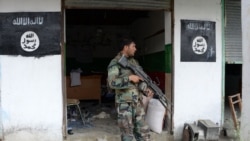In the two years of its existence in the Afghanistan-Pakistan theater, the Islamic State (IS) militants have attempted to materialize their grand ambition of recreating the Khorasan province of their global Islamist empire.
Wilayat Khorasan, the brand employed by IS affiliates in the two countries, underscores their ambition to recreate an ancient region comprising parts of today’s Afghanistan, Pakistan, Iran, and Central Asia.
But the group’s reliance on extreme violence and its apparent lack of a viable political strategy has mostly won them many enemies.
Their strategy has prompted Pashtun tribes, the Afghan Taliban, Kabul, and its NATO allies to foil their attempts to create a foothold in Afghanistan.
Their reliance on transnational militant networks and attempts to foment sectarian wars also attracted Pakistan, Central Asian states, Iran, Russia, and China to oppose their emergence in the region. Such a regional consensus against one militant group is rare given that Kabul, Islamabad, and Tehran often accuse each other of backing insurgents to foment violence in a neighboring country.
Despite sustaining significant rank-and-file losses, IS has proved its reliance and is still far from vanishing.
To assess the threat posed by IS, we turned to analysts and former officials. In Washington, Marvin Weinbaum, a former Afghanistan-Pakistan analyst for the U.S. State Department, joined Christopher Kolenda, who commanded paratroopers in Afghanistan and also served as an adviser to three NATO commanders. In Kabul, Hekmatullah Azamy, a researcher at the Kabul-based Centre for Conflict and Peace Studies, shared insights.
I have covered the Afghanistan-Pakistan IS chapter since its emergence in 2014, so I also shared my views. RFE/RL Media Relations Manager Muhammad Tahir moderated this discussion from Washington.
Listen to or download the Gandhara Podcast:
The views expressed in this podcast do not necessarily reflect the views of RFE/RL.









